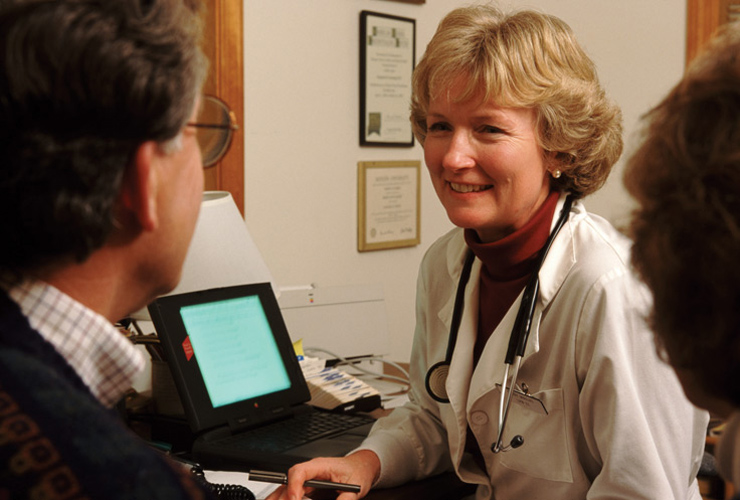
Primary health care providers are uniquely suited to screen depressed patients for suicidal ideation. Often these vulnerable people are reticent to seek services from a mental health clinician for a psychiatric condition that could lead them to consider suicide. New collaborative care models for depression management in the primary care setting show promise for lifting symptoms and may help prevent suicide in those vulnerable to self-harm.
Primary Care: A key to suicide prevention
Suicidal patients. They’re passing through the offices of internists, family practitioners and other primary care providers (PCPs) in droves, often unbeknownst to physicians and their staff.
In fact, as many as 70 percent of older patients who die by suicide have seen their PCP within a month of their death—20 percent of them within a week of when they died. Bob Stern was one of these.
This 77-year-old successful businessman had seen his doctor three days before he killed himself. The physician had even telephoned Bob within hours of his suicide to reassure him about the operation Bob was scheduled to undergo the following day to repair an aortic aneurysm.
What the doctor didn’t know was that his phone call to the Stern ranch in rural central California had come at an inopportune time. Bob was in the midst of videotaping himself as he considered suicide the way to avoid the operation and the prostate cancer he had also been diagnosed with.
Rather than be candid with his physician, Bob reassured the doctor that all was well. What could this physician have done to see through the words that Bob delivered that day, to consider that this strong, independent-minded and isolated man might not be willing to undergo medical treatments that would shake his very identity?
George Alexopoulos thinks he has the answer: routine assessment of depression and suicidal ideation in primary care settings. And Dr. Alexopoulos isn’t the the only one who feels this way. The U.S. Preventative Services Task Force (USPSTF), an independent panel of experts in primary care and prevention that develops recommendations for clinical preventive services, recommends screening adults for depression in clinical practices that have systems in place to ensure accurate diagnosis, effective treatment and follow-up. USPSTF is part of the Agency for Health Care Policy and Research within the U.S. Department of Health and Human Services.
“Routine assessment of suicidal ideation in depressed patients is necessary as these patients will rarely explicitly inform their physicians about suicidal thoughts or plans,” notes Alexopoulos, Professor of Psychiatry at Weill Medical College of Cornell University. Yet depression is inadequately treated in primary care settings, with more than 40 percent of depressed primary care patients receiving no antidepressant treatment, regardless of age and medical comorbidity. Of those who do receive antidepressants, insufficient dosages, inadequate treatment time, and poor treatment adherence by patients can compromise the care of depressed patients from primary care practitioners.
These physicians are in a unique role to recognize signs for suicide. Moreover, they are also able to address the depression, addictive disorders or other underlying conditions that could predispose vulnerable individuals to self-destructive thoughts and acts. Yet many PCPs are reticent to diagnose mental illness.
The reasons are many: insufficient time to spend with patients; inadequate training, discomfort or personal biases about mental disorders; fear of reprisal or litigation. When differences between doctor and patient exist in ethnicity, culture or language, there is chance for misinterpretation on both sides of the discussion. Too often these doctors will refer a patient to a psychiatrist or other mental health specialist. But the likelihood that a patient referred for psychiatric care will actually seek it out is not good, as research shows that the majority—more than 80 percent—of depressed primary care patients prefer to be treated by their PCP instead of a mental health specialist.
One answer to manage depression in primary care? A collaborative team approach that includes co-locating a psychiatric social worker, psychologist or psychiatric nurse in a primary care setting, with off-site support from a psychiatrist. This care manager offers symptom assessment, guideline-driven antidepressant treatment and treatment adherence support. Yet despite demonstrated successes, these collaborative care models are not yet widely used by PCPs.
“There is no evidence that physician inquiries about suicidal ideation can provoke a suicide attempt,” stresses Alexopoulos. “And early detection of suicidal ideation may prevent completion of suicide. So treatment of patients at risk for suicide is not only feasible but effective in primary care.”

